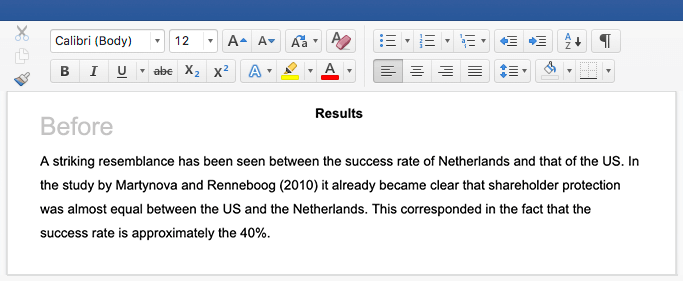
- An introduction
- Hook sentence
- Context/Background information
- Thesis statement
- Body paragraphs
- Topic sentence
- Sensory details
- Actual details
- A conclusion
- Summary of all main points
- Clincher Statement
The introduction serves to introduce your subject to the reader and give them enough context to fully understand your work—but keep it brief and interesting for the reader(s). When learning how to write a descriptive essay introduction, remember – the first paragraph of your paper is the part that can make your descriptive essay stand out from the others.
Finding descriptive essay topics isn’t hard. You can describe pretty much anything—from your favourite car to today’s weather. We’ve gathered some ideas to help you get started. Hopefully, you’ll find good descriptive essay topics to spark your imagination.
When you come back to your descriptive essay, here are some questions to ask yourself:
Descriptive Essay Topics & Ideas
When thinking about descriptive essay writing, remember that a structured paper outline is your golden ticket. Not only does it help you organize thoughts, but it will also help your essays flow better.
Let’s talk in detail about the final step here: reviewing your paper. After you finish writing, take a break. It’s always best to clear your mind before editing your paper.
Let one of our writers do it for you, all you have to do is send us your paper requirements and wait for your original paper to be written.
Pick a person who you know well—doing so gives you a lot to write about. Choose from family members, friends, teachers, etc. You can even write about a celebrity who exposes most of their private life to the media: The Kardashians, Kanye West, or Taylor Swift for instance. A famous superhero like Spider-Man is also interesting. Such fictional figures have undergone many character studies from both academic and non-academic perspectives.

For further information on how to write a thesis for a descriptive essay, check out the examples below.
- Describing the experience of swimming in the azure sea in summer
- Explaining your favourite movie and its impact on you
- Reflecting on your birthday and all the things that have shaped you in the past
Writing the paper consists of the following stages:
- Start with a topic sentence. ex. The orange looks familiar
Describe an Emotion
There are usually three body paragraphs in a paper. They cover three different points or arguments. How many body paragraphs to include in your descriptive essay is entirely up to you—or your professor. Sometimes it only takes a paragraph to tell a story, while other times it takes books.
- The first thing to do at the end is to reflect on the initial purpose of the work. Spill the beans on why you decided to write about this subject, and how this subject has affected your life.
- Signify the Importance of the Details: Go over some key moments of the paper. Give a summary of what you have covered, and prepare the audience for the clincher statement.
- Clincher Statement: The clincher is the final sentence that reinforces your paper’s overall purpose or leaves your audience with an intriguing thought, question, or quote. You’ve probably spent a lot of time thinking of a hook to pull the audience in. Do not allow the paper to escape your audience’s thoughts right after they have finish reading it.
It is important to spend enough time considering the victim of description because all of your illustrations will be based around it.
Try to incorporate the following into your conclusion:
A standard essay should have 5 paragraphs. The introduction has one paragraph, body three paragraphs, and then the concluding paragraph. When you have sections, you can have lots of more paragraphs.
The subject is best described using a list of sensory details you wrote down before starting to write the essay.
For example, you could describe your mother as “tough”, scented with jasmine, and “ferociously intelligent”.
Creating a brief outline goes a long way to organize your work. The best way is to do it in sections. These are the introduction, body, and finally, conclusion.
How to Write a Descriptive Essay for an A Grade

You will be best off using a strong opening line that captivates the attention of the reader. After that, end your introduction with the thesis statement.
For example, you could say you have complicated feelings about your mom. “I feel sadness and joy at the same time. I’m sad that she made a lot of sacrifices for us and overjoyed for the good things I enjoy now purely because of her”.
It not only states the essay’s purpose but also doubles as a guide for the entire essay. It should be in the introduction and also restated in the concluding paragraph.
Here’s an example of an argumentative essay question that asks you to take a side in a debate:
Your thesis shouldn’t be a simple statement of fact that everyone already knows. A good thesis statement is a claim that requires further evidence or analysis to back it up.
Everything mentioned in your thesis statement must be supported and explained in the rest of your paper.
You might already have a question in your assignment, but if not, try to come up with your own. What would you like to find out or decide about your topic?
Step 1: Start with a question

Particularly in an argumentative essay, your thesis statement should be something that others might question or disagree with.
- It gives your writing direction and focus.
- It gives the reader a concise summary of your main point.
The best thesis statements are concise, contentious and coherent.

The outline should list details of what you intend to discuss in your paragraphs that supports your thesis statement. Each paragraph should have its main idea but group all your paragraphs along a similar theme
Review your work and proofread it for any grammar, punctuation, and spelling mistakes before you submit it
Adjectives are commonly used for descriptive writing and it makes perfect sense to generously us them. However, the use of more than three adjectives consecutively throughout the paper, disrupts flow of thoughts and the paper may end up sounding pretentious
You have to involve the reader’s five senses and emotions. To achieve this, you can utilize personification and descriptive adjectives to create that explicit picture in the reader’s mind
Create a thesis statement
Common mistakes you should avoid while writing a descriptive essay
Similes and metaphors are also linguistic tools used to describe something thus should be complemented with adjectives
It should have a strong finishing and it should recap your thesis statement.

